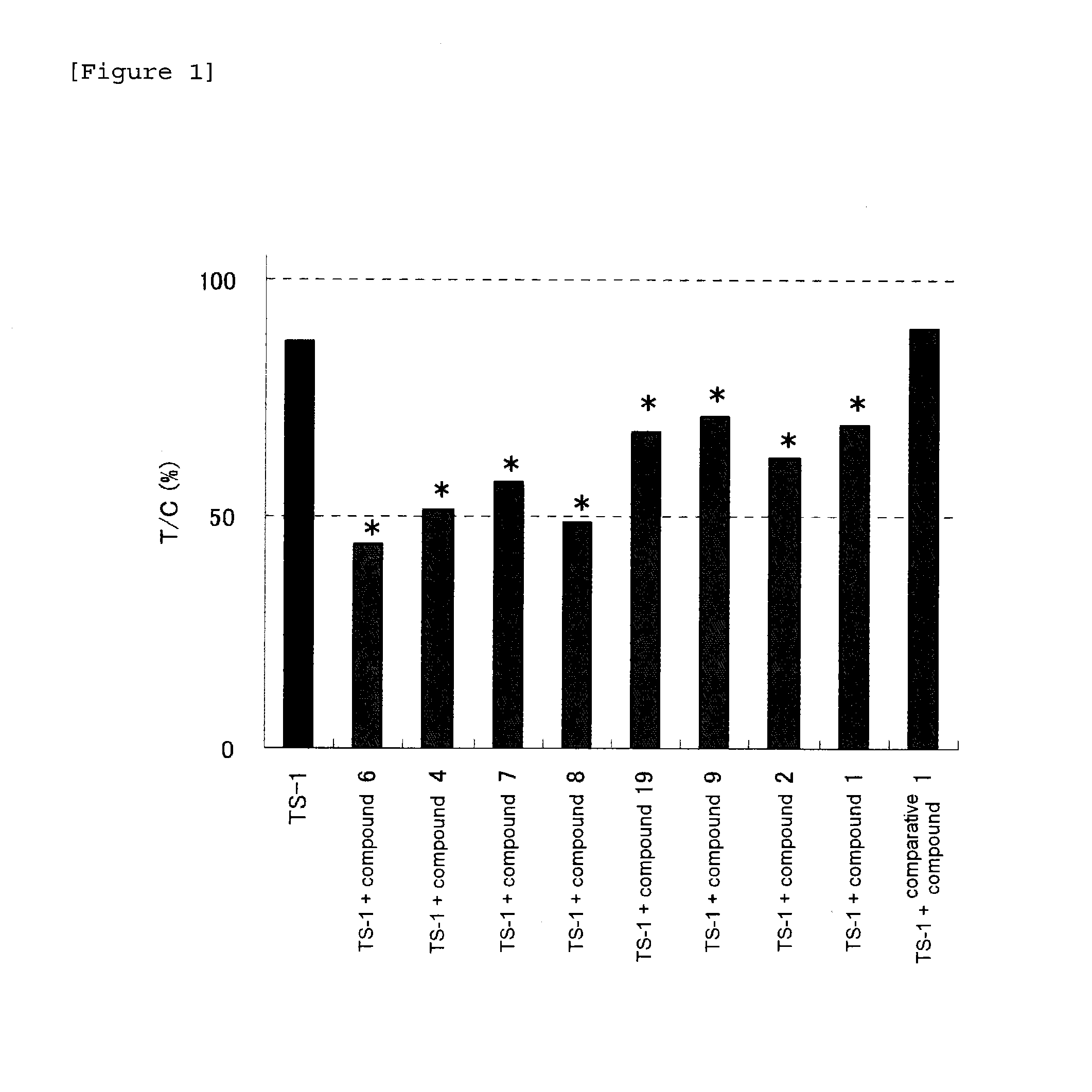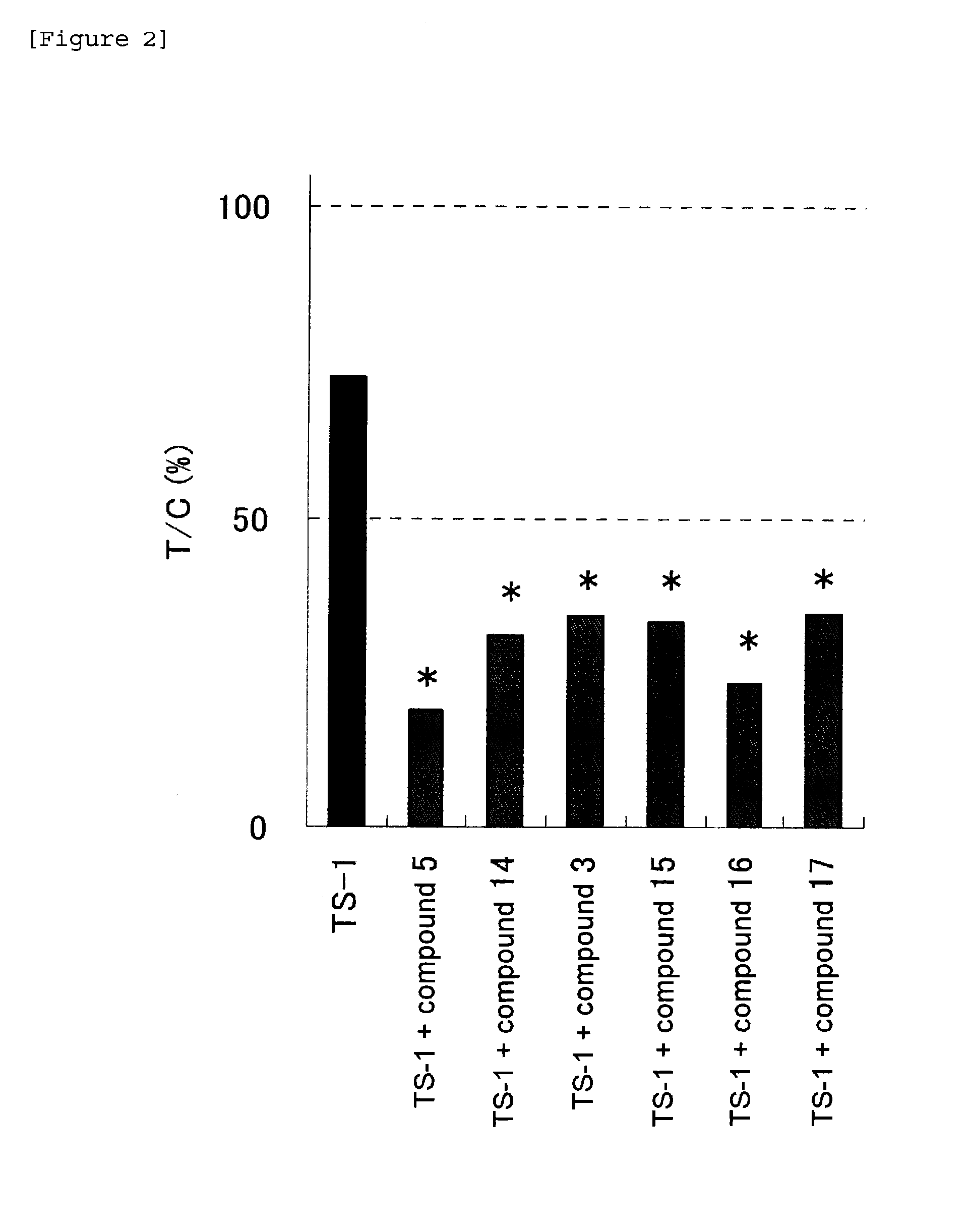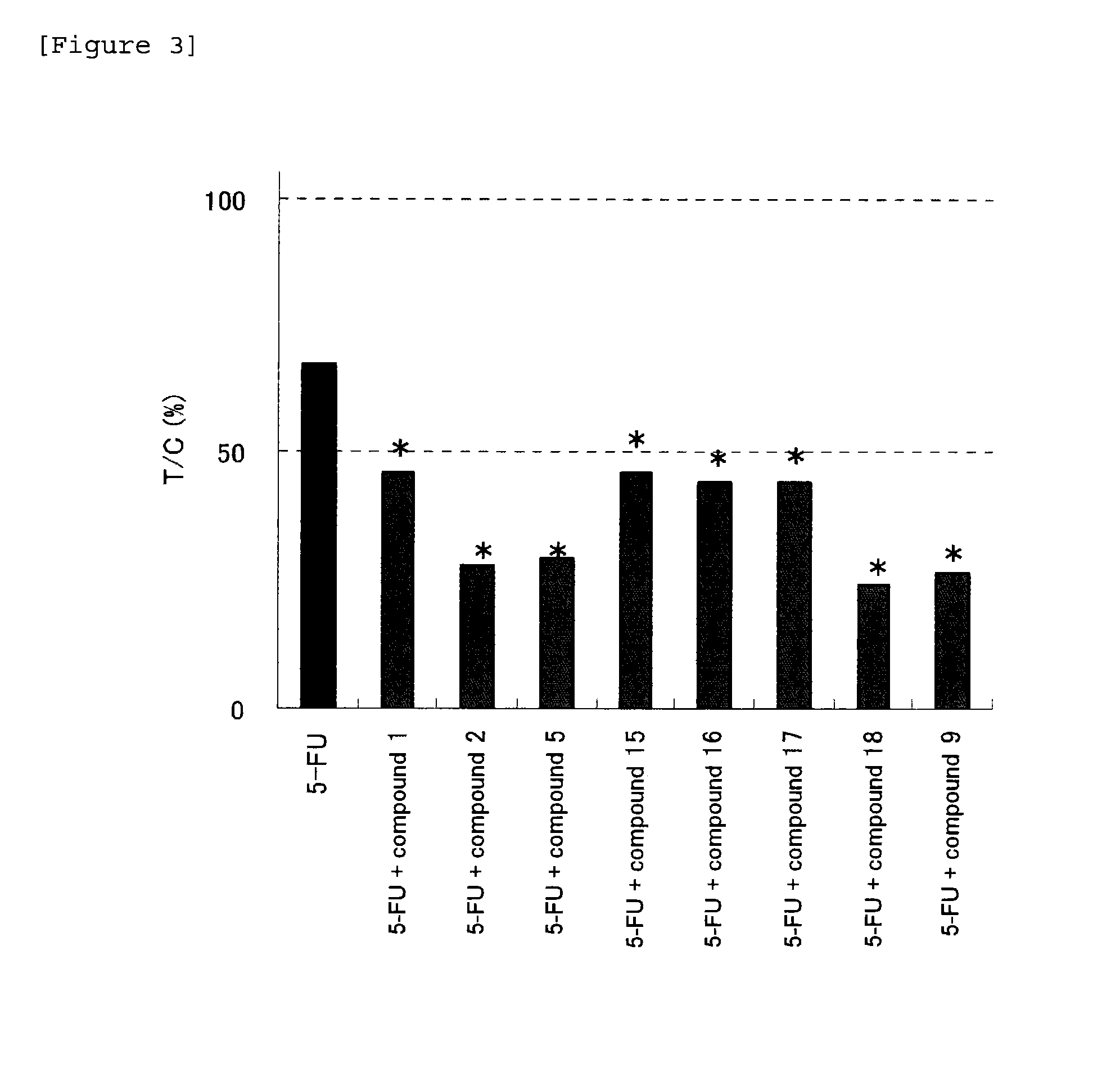Anti-tumor effect potentiator
a potentiator and anti-tumor technology, applied in the field of anti-tumor effect potentiators, can solve the problem that the small molecule inhibitor of human dutpase effect actually exhibits anti-tumor
- Summary
- Abstract
- Description
- Claims
- Application Information
AI Technical Summary
Benefits of technology
Problems solved by technology
Method used
Image
Examples
reference example 1
Synthesis of (3-(cyclopropylmethoxy)phenyl)methanamine
[0117]
[0118]3-Cyanophenol (12.4 g) was dissolved in N,N-dimethylformamide (hereinafter, referred to as DMF; 100 mL). To the solution, potassium carbonate (30.5 g), potassium iodide (1.74 g), and (chloromethyl)cyclopropane (10.2 mL) were added, and the mixture was stirred at 90° C. for 4 hours. To the reaction mixture, water (130 mL) was added, and the resultant mixture was then extracted with toluene (130 mL). The organic layer was washed with brine (100 mL), dried over anhydrous sodium sulfate, and then concentrated under reduced pressure. The residue was dissolved in tetrahydrofuran (hereinafter, referred to as THF; 60 mL). To the solution, a solution of lithium aluminum hydride (hereinafter, referred to as LAH) in THF (2.4 M, 68 mL) was gradually added dropwise at 0° C., and the reaction mixture was then stirred at 45° C. for 4 hours. To the reaction mixture, water (10 mL), an aqueous sodium hydroxide solution (1.0 M, 10 mL), ...
reference example 2
Synthesis of (R)-1-(3-(cyclopentyloxy)phenyl)ethanamine hydrochloride
[0119]
[0120]3-Hydroxybenzaldehyde (12.2 g) was dissolved in DMF (120 mL). To the solution, bromocyclopentane (32.8 mL), potassium carbonate (27.6 g), and potassium iodide (1.66 g) were added, and the mixture was stirred at 120° C. for 3.5 hours. The reaction mixture was cooled to room temperature, water (120 mL) was then added thereto, and the resultant mixture was then extracted with toluene (120 mL). The organic layer was washed with water (120 mL), an aqueous sodium hydroxide solution (1.0 M, 120 mL), and brine (100 mL), dried over anhydrous sodium sulfate, and then concentrated under reduced pressure. The residue was dissolved in toluene (250 mL). To the solution, (S)-(−)-2-methyl-2-propanesulfinamide (13.3 g) and titanium tetraisopropoxide (44.4 mL) were added, and the mixture was stirred at 70° C. for 6 hours. The reaction mixture was cooled to room temperature, and an aqueous saturated sodium bicarbonate sol...
reference example 3
Synthesis of (R)-1-(3-((R)-tetrahydrofuran-3-yloxy)phenyl)ethanamine hydrochloride
[0121]
[0122]3-Hydroxybenzaldehyde (1.3 g), triphenylphosphine (3.6 g), and (S)-(+)-tetrahydro-3-furanol (1.2 mL) were dissolved in THF (20 mL). To the solution, a toluene solution of diethyl azodicarboxylate (hereinafter referred to as DEAD) (2.2 M, 6.2 mL) was gradually added dropwise at 0° C., and the mixture was then stirred at room temperature for 2 hours. The reaction mixture was concentrated under reduced pressure, and ethyl acetate (20 mL) was then added thereto. The organic layer was washed with an aqueous sodium hydroxide solution (1.0 M, 5.0 mL), dried over anhydrous sodium sulfate, and then concentrated under reduced pressure. The residue was purified by silica gel column chromatography (500 ethyl acetate / hexane). The obtained compound was dissolved in toluene (6.5 mL). To the solution, (S)-(−)-2-methyl-2-propanesulfinamide (330 mg) and titanium tetraisopropoxide (1.1 mL) were added, and the...
PUM
| Property | Measurement | Unit |
|---|---|---|
| temperature | aaaaa | aaaaa |
| temperature | aaaaa | aaaaa |
| temperature | aaaaa | aaaaa |
Abstract
Description
Claims
Application Information
 Login to View More
Login to View More - R&D
- Intellectual Property
- Life Sciences
- Materials
- Tech Scout
- Unparalleled Data Quality
- Higher Quality Content
- 60% Fewer Hallucinations
Browse by: Latest US Patents, China's latest patents, Technical Efficacy Thesaurus, Application Domain, Technology Topic, Popular Technical Reports.
© 2025 PatSnap. All rights reserved.Legal|Privacy policy|Modern Slavery Act Transparency Statement|Sitemap|About US| Contact US: help@patsnap.com



